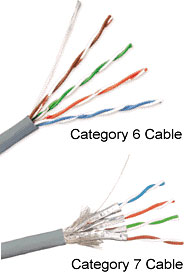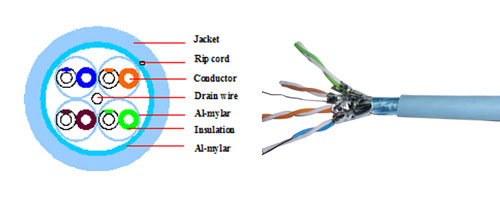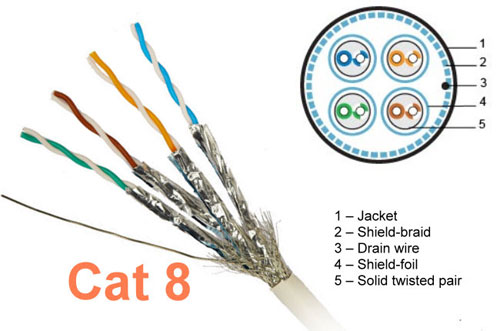
The use of balanced, four twisted pair, infrastructure high-speed I/O network system copper cabling, both new and old types, is in a major transition right now.
CAT-5e 100 MHz unshielded, twisted pair cabling usage is in significant decline as does not support newer emerging applications and signaling technologies. It has been used for primarily 100 Mbps through 1 Gbps Ethernet 1-100-m LAN applications. Soon it will be used mostly for minor changes in the installed base and not for new datacenter implementations as 10 Gbps Ethernet ports have been quickly ramped up as the primary port type usage. The older CAT-5 UTP cable is only good for 100 Mbps up to 100 m and is in the maintenance-to-end-of-life phase of its product lifecycle.

CAT-6 250 MHz UTP cable only supports 10 Gbps short length applications from 35-55 m depending on crosstalk environment. CAT-6a 500 MHz UTP and also shielded twisted pair have become the most popular usage type in North America as they are certified for 10 Gbps to 100 m. Although 10 Gbps Ethernet ports shipments have taken over as the volume leader, newer applications will expand and extend CAT-6a product life cycles. The IEEE-802.3bz Ethernet standards committee is developing 2.5GBaseT and 5GBaseT 100M specifications that will help to support IoT applications. It is mostly targeting new wiring cabinets that support many WIFI IEEE802.11ac aggregation connections.
CAT-7 600MHz individually shielded pair cabling with overall cable shield was initiated by European market leaders and standards bodies for 10 Gbps 100-m Ethernet LAN applications with better crosstalk control performance than CAT-6a. However North America standards groups TIA and EIA-568 have not recognized

CAT-7 or CAT-7a standards. CAT-7a 1000MHz also with individually shielded pairs and overall cable shield is supported by the ISO cabling standard organization. It is the most popular structured cabling type in the western countries of Europe. This cable type appears to support the developing IEEE-802.3bq 25GBaseT and 40GBaseT up to 50 m. Some segments of the North American market have gone ahead and installed CAT-7a cabling for better future proofing of new applications.

CAT-8 1.6GHz and 2GHz STP 1-30-m cabling standards and specifications are in final harmonized development with national ANSI/TIA-568-C-2.1 and international ISO/IEC 11801-99-1 standards bodies. From the start, there have been two types with CAT-8.1 1.6GHz backward compatible with CAT-6a connectors targeting 25GBaseT applications. The CAT-8.2 2GHz specification is being driven by Transceiver companies working within the IEEE-802.3bq committee, primarily targeting 40GBaseT applications. CAT-8 cabling types are already in production and are even offered for sale on Amazon though the specifications are not complete.
The shorter reach will limit applications to be in just Telecom rooms and some smaller datacenters, but not the traditional LAN applications. CAT-8 cabling is larger in diameter size, thus taking more room and limiting airflow. It also weighs more, sometimes being too heavy for older datacenter floors and is harder to route in the infrastructure and racks.
There is significant research and development work going on to support nascent Ethernet 100GBaseT roadmap, technologies and potential products. But the twisted pair cabling reach maybe only 1-10 m and would likely not compete well versus datacenter point to point twin axial copper cabling in racks or between racks and is already being used for 100G applications in production.


Leave a Reply
You must be logged in to post a comment.